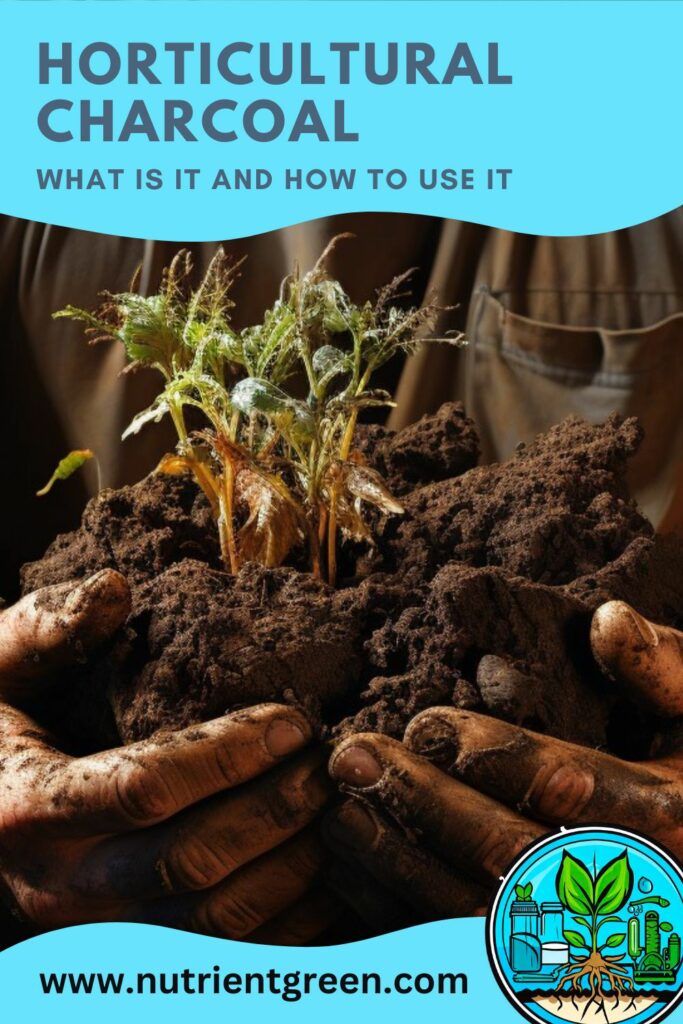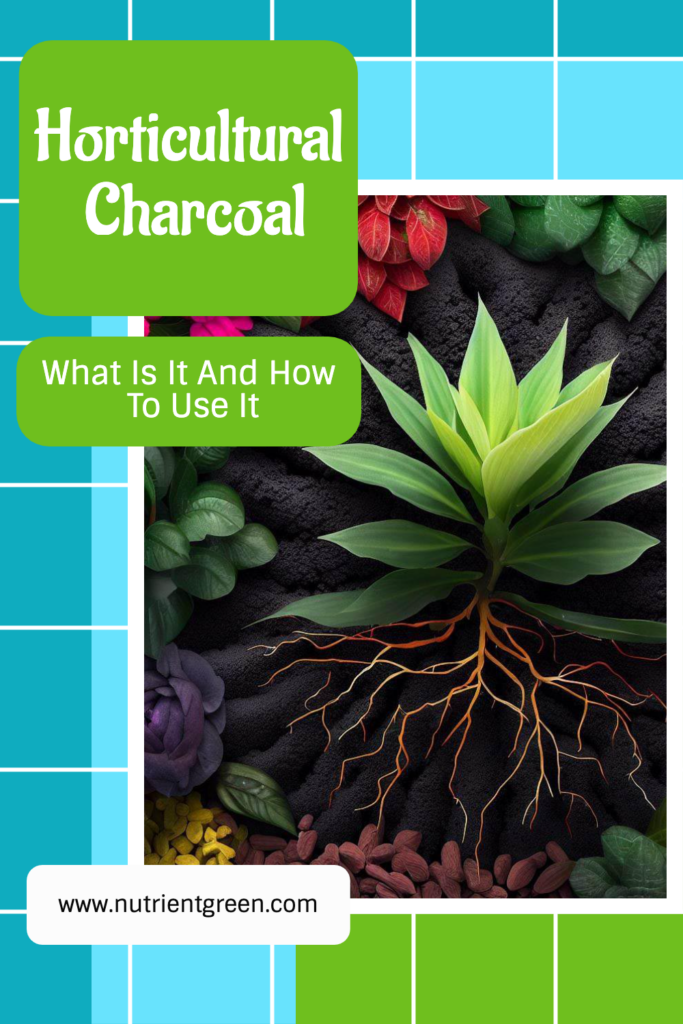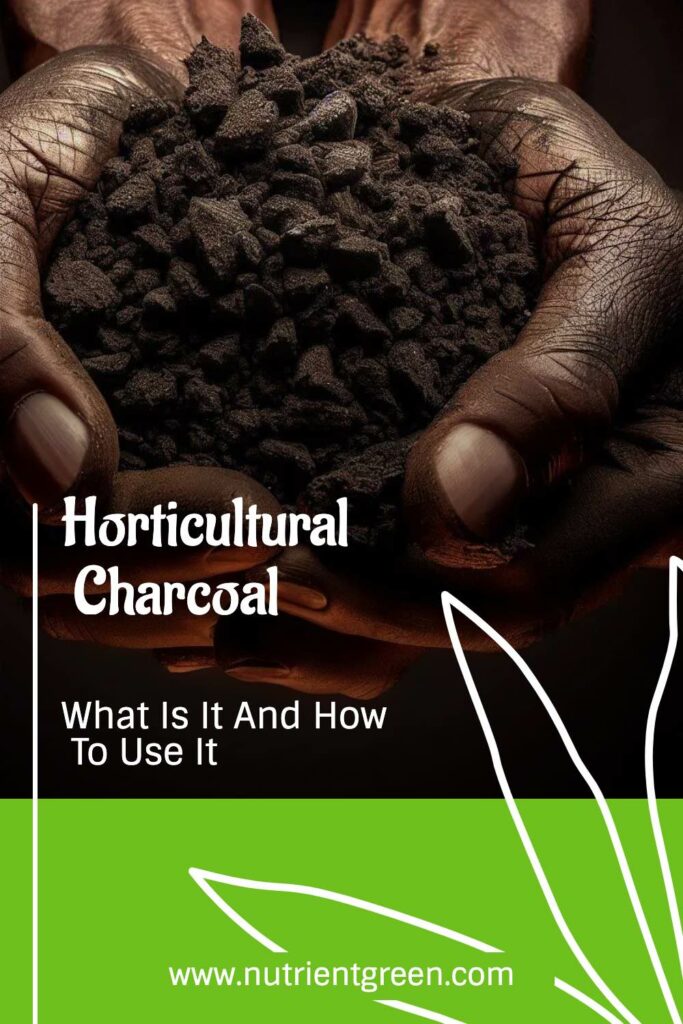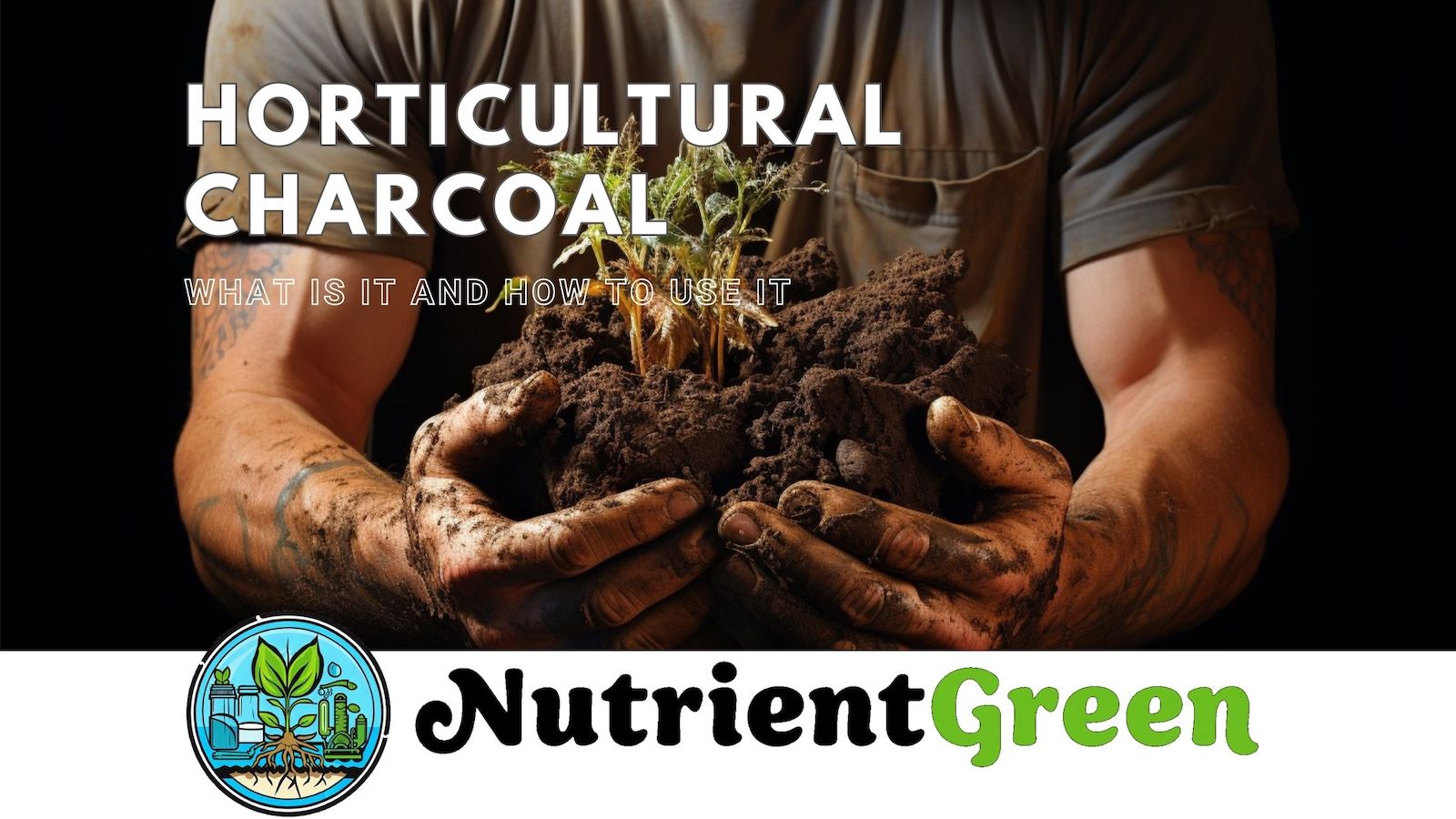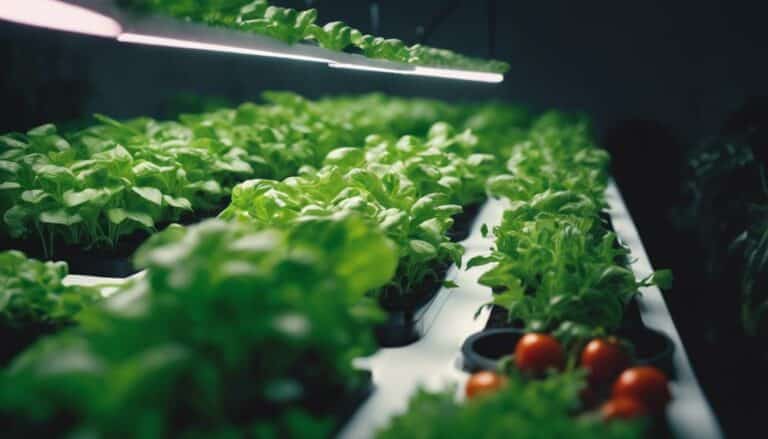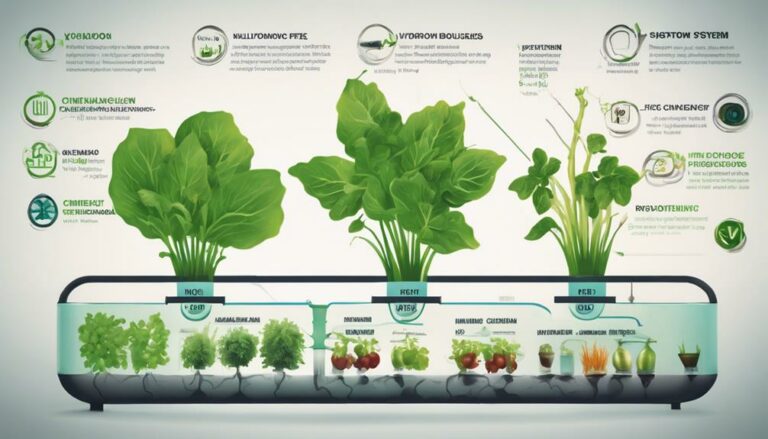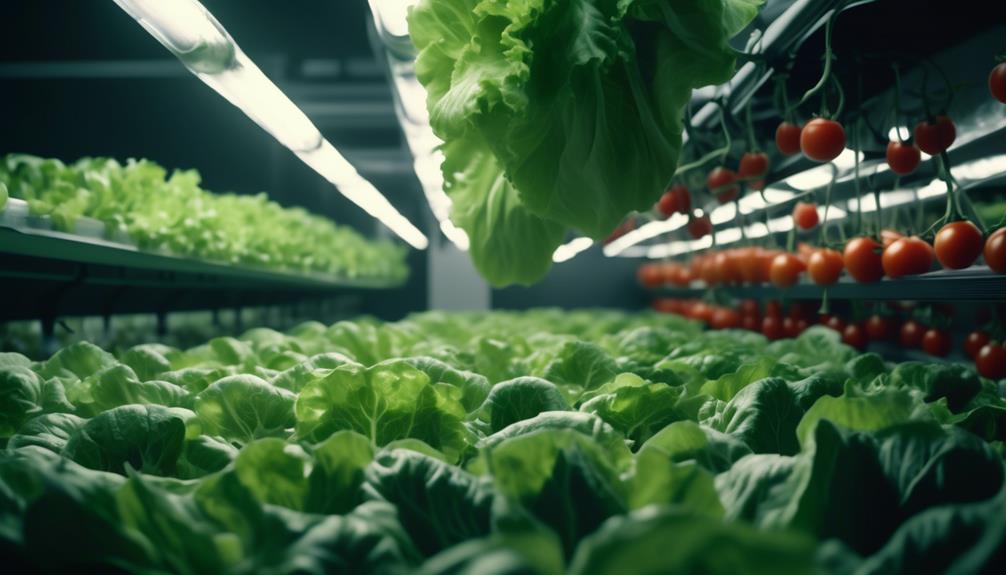Table of Contents
Introduction to Horticultural Charcoal
Welcome to a world where gardening takes on a new level of brilliance – a world where horticultural charcoal emerges as the unsung hero of your garden’s success story. As a fellow gardening enthusiast, I’m excited to dive into the secrets and wonders of horticultural charcoal with you. In this article, we’ll unravel the mysteries behind this exceptional gardening ally, explore its numerous benefits, and discover the art of incorporating it into your gardening routines. If you’re eager to breathe new life into your plants and watch them flourish like never before, then horticultural charcoal is about to become your favorite gardening hack. Let’s embark on this journey together and unlock the potential of your garden’s thriving future.
What is Horticultural Charcoal?
At first glance, the term “horticultural charcoal” might conjure images of barbecues and cookouts, but in the realm of gardening, it holds an entirely different significance. Horticultural charcoal is a specialized form of carbon derived from organic materials such as wood, coconut shells, and peat. Unlike the charcoal used for grilling, horticultural charcoal undergoes a meticulous process that transforms it into a porous and nutrient-rich powerhouse for your garden.
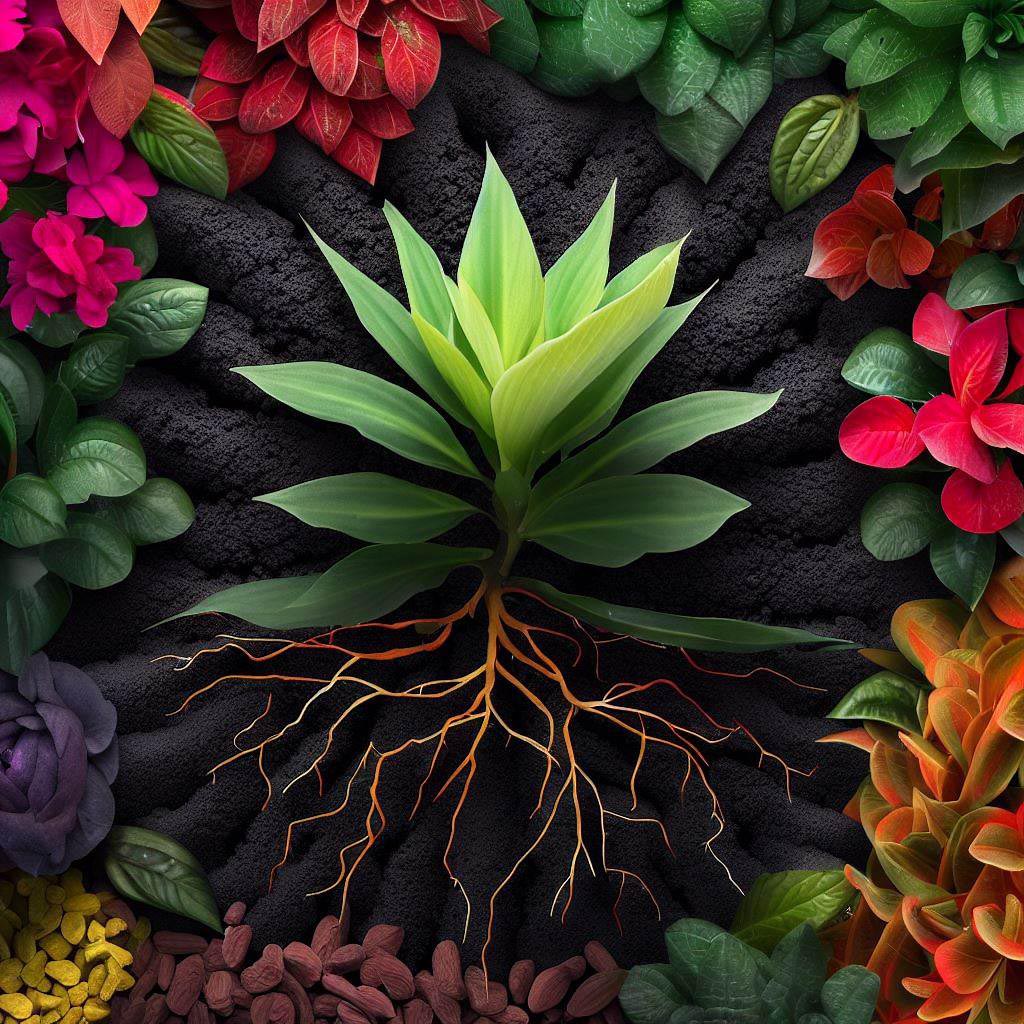
Think of it as nature’s sponge, ready to absorb and retain moisture, nutrients, and even harmful substances from your garden soil. This unique characteristic sets horticultural charcoal apart, making it an invaluable asset for enhancing soil structure, improving plant health, and ultimately, elevating your gardening experience to new heights. Let’s dive deeper into the science and practical applications of this magical substance.
The Science Behind Horticultural Charcoal
To truly appreciate the magic of horticultural charcoal, we need to peer into the intricate science that underpins its remarkable properties. Imagine a microscopic labyrinth within each charcoal particle – a labyrinth designed to absorb, store, and release essential elements crucial for plant growth.
The porous structure of horticultural charcoal acts as a reservoir, capable of holding onto moisture and nutrients that might otherwise be lost in the depths of your garden soil. This structure is formed during the controlled heating process, which causes the organic material to break down, leaving behind a network of interconnected pores.
Picture these pores as tiny containers, eagerly waiting to capture water molecules, minerals, and even toxins. When you water your plants or provide them with nutrients, horticultural charcoal acts as a mediator, holding onto these precious resources until your plants are ready to make use of them.
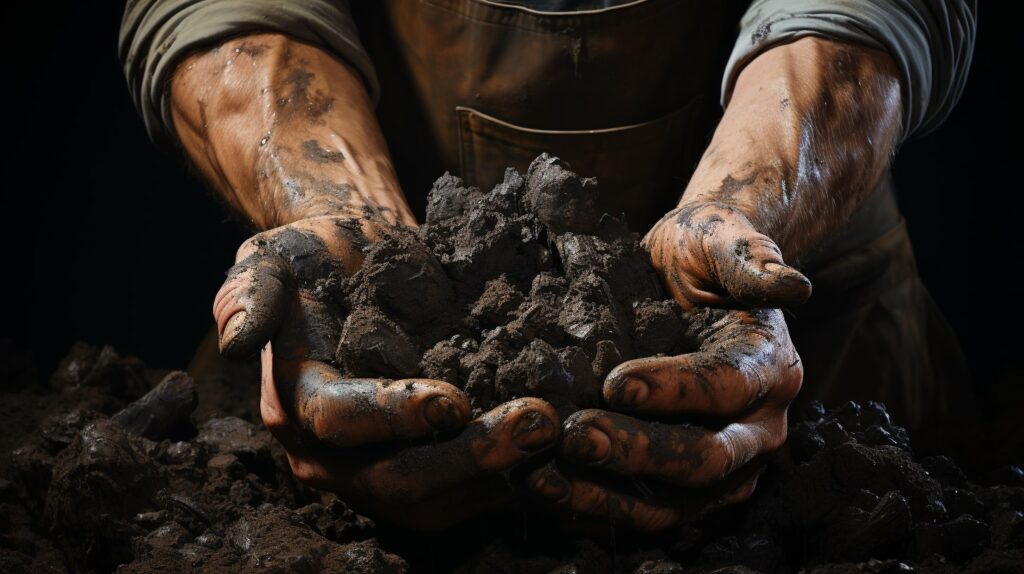
But that’s not all. Horticultural charcoal also plays a role in soil aeration. The air pockets within its porous structure facilitate the exchange of gases between the soil and the atmosphere. This aeration prevents soil compaction, allowing plant roots to breathe and grow without hindrance.
Furthermore, the neutral pH of horticultural charcoal contributes to stabilizing soil acidity. It acts as a buffer, helping to prevent dramatic shifts in pH levels that can impact nutrient availability and plant health.
In essence, horticultural charcoal transforms your garden soil into a vibrant ecosystem, teeming with life-supporting elements. It’s not just a passive addition; it’s an active participant in nurturing your plants. With a little help from the science behind horticultural charcoal, your garden becomes a thriving haven where plants flourish and bloom like never before.
Benefits of Using Horticultural Charcoal
Let’s delve into the captivating world of horticultural charcoal’s benefits, where nature’s black diamond emerges as a game-changer for your garden. From enhancing soil health to boosting plant growth, here’s how horticultural charcoal can revolutionize your gardening experience:
Improving Soil Drainage
Imagine a heavy downpour drenching your garden. While water is essential for plant growth, excess moisture can lead to disastrous consequences like root rot and fungal diseases. Horticultural charcoal steps in as your garden’s drainage superhero. Its porous structure acts like a sponge, soaking up excess water and gradually releasing it, creating a balanced moisture level that’s conducive to plant health. By preventing waterlogging, horticultural charcoal ensures that oxygen can still reach the roots, a vital requirement for their respiration and overall vitality.
Preventing Soil Compaction
Gardeners often wrestle with compacted soil, hindering root growth and nutrient absorption. Horticultural charcoal enters the scene as a liberator for roots. Its granular nature fosters air pockets within the soil, effectively enhancing aeration. As roots delve into these air-filled spaces, they enjoy greater freedom to expand, leading to stronger root systems that anchor plants more securely. This, in turn, enhances nutrient uptake, promoting lush foliage, vibrant blooms, and even better fruit production.
Enhancing Nutrient Retention
Think of horticultural charcoal as a guardian of nutrients. When you fertilize your garden, these valuable elements risk getting washed away by heavy rains or excessive watering. Horticultural charcoal comes to the rescue by absorbing and retaining these nutrients within its pores. As plants need nourishment, they draw on these nutrient reserves, resulting in prolonged nutrient availability and less frequent fertilization. This efficient nutrient cycling means your plants receive a steady supply of sustenance, leading to robust growth and overall well-being.
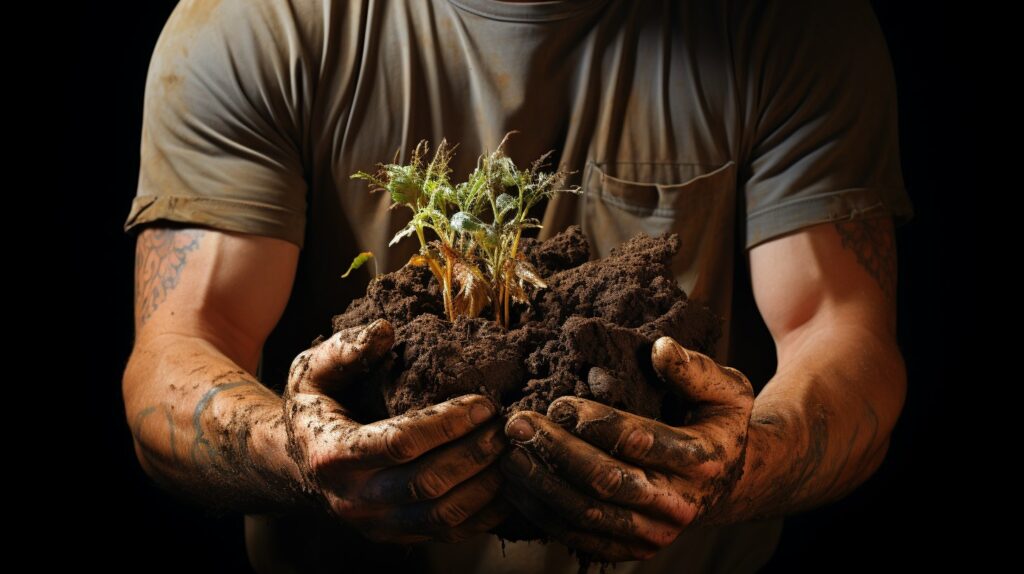
Balancing Soil pH Levels
Soil pH plays a pivotal role in determining which nutrients are accessible to your plants. For instance, acidic-loving plants like blueberries require lower pH levels, while alkaline-loving ones like lavender prefer higher pH. Enter horticultural charcoal, the pH stabilizer. With its neutral pH, it acts as a mediator, helping to buffer against drastic pH shifts. This is especially beneficial in areas with naturally acidic or alkaline soil. By maintaining a balanced pH environment, horticultural charcoal paves the way for healthier, more productive plants that can absorb nutrients optimally.
From water management to root empowerment, nutrient guardianship to pH balance, the benefits of horticultural charcoal are rooted in sound scientific principles. Its multifaceted nature addresses core challenges in gardening, making it a versatile tool for both beginners and seasoned gardeners. So, as you apply horticultural charcoal to your garden, remember that each granule carries the potential to transform your gardening landscape into a thriving paradise.
How to Incorporate Horticultural Charcoal in Your Garden
Now that we’ve uncovered the secret powers of horticultural charcoal, let’s roll up our sleeves and explore practical ways to integrate this gardening marvel into your green haven. From potted plants to terrariums, here’s how you can make the most of horticultural charcoal’s benefits:
Mixing Charcoal with Potting Mix
Container gardening enthusiasts, rejoice! To harness the benefits of horticultural charcoal, start by reimagining your potting mix. As you prepare the mix for your potted plants, introduce horticultural charcoal at a ratio of approximately 1:4 – one part charcoal to four parts potting mix. This balanced concoction marries the porous nature of charcoal with the soil’s structure, resulting in improved drainage and aeration. For plants that despise sitting in stagnant water, such as cacti, succulents, and herbs, this mixture becomes a haven of health. It not only prevents overwatering and root rot but also encourages robust root development.
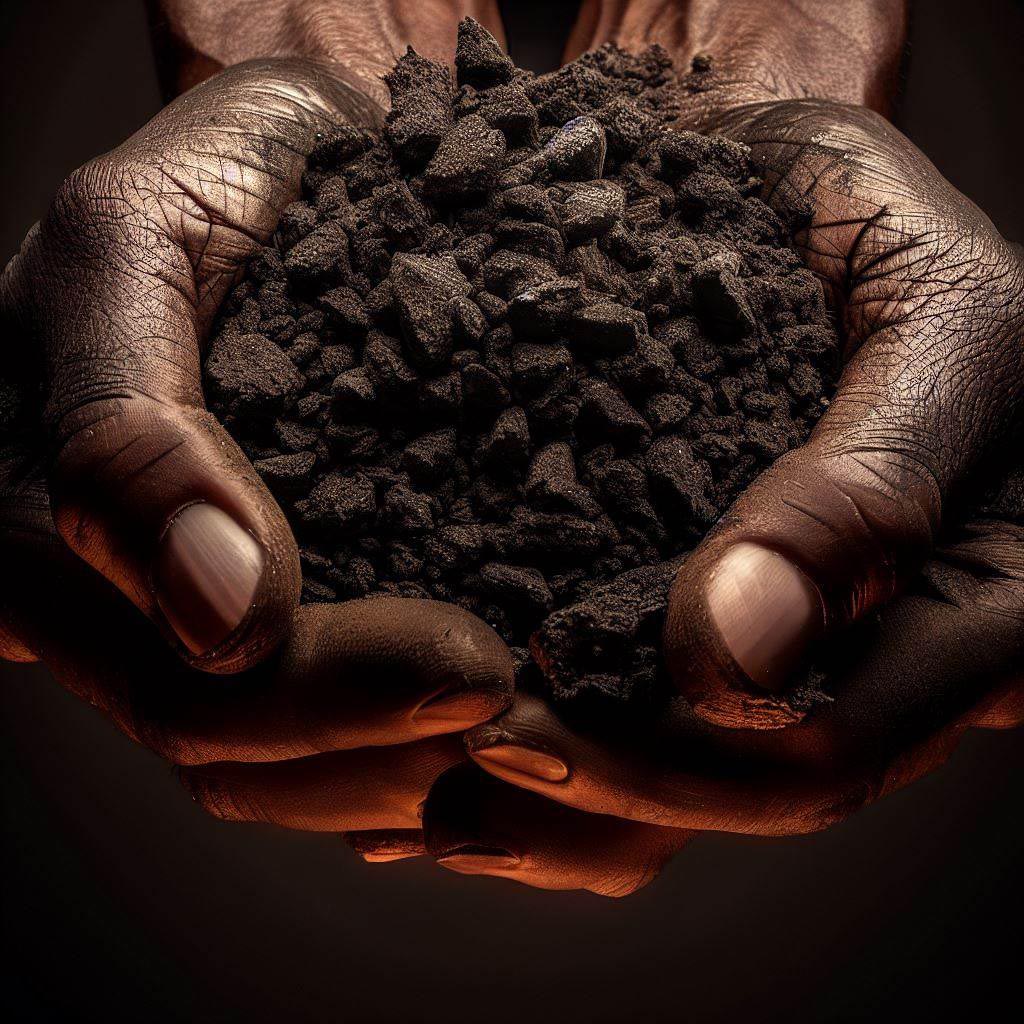
Creating Charcoal Layering in Planters
When it comes to larger planters or raised beds, the strategic layering of horticultural charcoal is a game-changing technique. Begin by placing a thin layer of charcoal at the bottom of your planter, just above the drainage holes. This layer acts as a first line of defense against water accumulation and potential clogs. As water filters through the soil, the charcoal layer acts as a natural filter, purifying the water and allowing it to exit the planter without saturating the soil. This technique not only ensures optimal moisture levels but also prevents the dreaded soil compaction that often plagues larger containers. So, whether you’re cultivating vibrant flowers or delectable veggies, this technique is your ticket to healthy, well-draining soil.
Applying Charcoal in Terrariums
Terrariums are enchanting microcosms, inviting us to create self-sustaining worlds within glass containers. When incorporating horticultural charcoal, consider it your terrarium’s best-kept secret. Before introducing the soil, add a fine layer of horticultural charcoal at the base of the container. This layer serves as a natural deodorizer, absorbing excess moisture and preventing any unpleasant odors that might arise in the humid environment. For closed terrariums, where humidity is crucial, the charcoal layer plays a vital role in maintaining the balance of moisture, preventing mold growth and ensuring your terrarium thrives. From delicate ferns to miniature orchids, your terrarium inhabitants will thank you for this thoughtful addition.
By embracing these creative ways to use horticultural charcoal, you’re not only nurturing your plants but also elevating the aesthetics and functionality of your gardening endeavors. The beauty of horticultural charcoal lies not only in its physical attributes but also in its versatility – a companion that adapts to various gardening scenarios. As you experiment with these techniques, you’ll witness firsthand the transformative effects of this humble yet powerful gardening ally.
Selecting the Right Type of Horticultural Charcoal
Now that we’re well-versed in the wonders of horticultural charcoal, it’s time to navigate the world of options and choose the perfect type for your gardening needs. From lump charcoal to activated charcoal, understanding the distinctions will empower you to make the best choice for your plants:
Lump Charcoal vs. Charcoal Briquettes
When embarking on your horticultural charcoal journey, the first decision you’ll encounter is the choice between lump charcoal and charcoal briquettes. Opt for lump charcoal if you’re seeking a more natural and unadulterated option. Lump charcoal consists of pure chunks of wood that have been carbonized, resulting in irregular shapes and varying sizes. This diversity translates into better aeration within the soil, promoting root growth and nutrient absorption. On the other hand, charcoal briquettes are often bound together with additives that could hinder their effectiveness in gardening. While they might serve well for grilling, their composition makes them less suitable for our green companions.
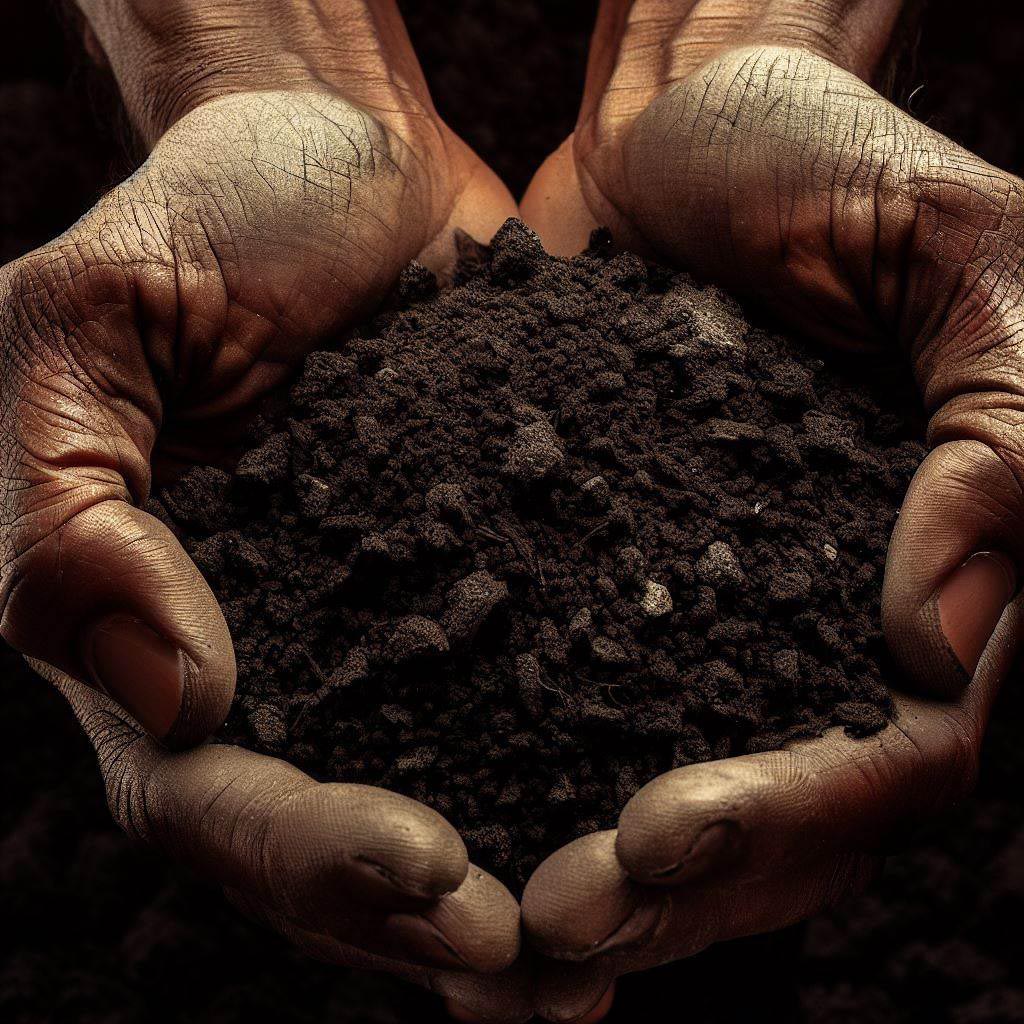
Activated Charcoal and Its Uses
Beyond lump charcoal and briquettes, another intriguing option is activated charcoal. This variant undergoes a unique activation process that opens up its pores even further, enhancing its absorbent capabilities. While commonly used for air and water purification, activated charcoal has a place in the gardening realm as well. It excels in water filtration, making it a valuable addition to rain gardens or systems that harvest rainwater. Its porous nature effectively traps impurities and toxins, providing your plants with cleaner water and a healthier environment. Keep in mind that while activated charcoal’s absorption prowess is beneficial, moderation is key. Using it in conjunction with horticultural charcoal can strike a balance between purification and moisture retention.
By selecting the right type of horticultural charcoal, you’re setting the foundation for a successful gardening experience. The choice between lump charcoal and activated charcoal depends on your specific needs and preferences. Ultimately, with either option, you’re inviting a natural, organic powerhouse into your garden that will work in harmony with your plants to create a thriving, nurturing environment.
Common Mistakes to Avoid When Using Horticultural Charcoal
It’s important to steer clear of common pitfalls that might hinder its effectiveness. Let’s explore these potential missteps to ensure your gardening endeavors reap the full benefits of this remarkable substance:
Overusing Charcoal in Soil
While horticultural charcoal brings a host of benefits, more isn’t necessarily better. One common mistake is overusing charcoal in your soil mixture. Adding excessive amounts of charcoal can alter the soil’s structure and compromise its water-holding capacity. Remember, horticultural charcoal is a supplement, not the main course. Follow recommended ratios and guidelines to strike the right balance between moisture retention, aeration, and nutrient availability. Moderation is key to harnessing the advantages without disrupting the delicate equilibrium of your garden’s ecosystem.
Neglecting Regular Watering
It’s easy to assume that with horticultural charcoal’s moisture-retaining properties, regular watering becomes less important. However, this is a misconception that can lead to another mistake – neglecting your plants’ hydration needs. While horticultural charcoal assists in maintaining moisture levels, it doesn’t replace the need for consistent watering. Plants still require a steady supply of water to thrive and grow. Monitor your plants’ soil moisture and water them accordingly, taking into account their individual preferences and environmental conditions. Remember, a harmonious partnership between horticultural charcoal and watering practices is essential for optimal plant health.
By being mindful of these common mistakes, you’re well-equipped to make the most of horticultural charcoal’s benefits without falling into potential traps. Embrace a balanced approach that considers both the unique characteristics of this gardening ally and the specific requirements of your plants. With this knowledge, you’re prepared to create a flourishing garden where horticultural charcoal plays a pivotal role in nurturing vibrant, thriving plant life.

Horticultural Charcoal: Fact vs. Fiction
As we continue our journey into the realm of horticultural charcoal, it’s time to address some common misconceptions and separate fact from fiction. Let’s dispel myths and shed light on the truth behind the magic of horticultural charcoal:
Myth: Charcoal Alters Soil Structure Permanently
One prevailing myth suggests that incorporating horticultural charcoal permanently alters the soil’s structure, leading to irreversible changes. In reality, while horticultural charcoal does influence soil properties, its effects are not permanent. The charcoal’s presence enhances aeration, drainage, and nutrient retention, which can greatly benefit plants. However, these improvements are dynamic and can change over time as the charcoal breaks down. Rest assured that any adjustments to your garden’s soil structure can be managed and adapted as needed, allowing you to maintain control over your gardening environment.
Fact: Charcoal Supports Beneficial Microorganisms
Contrary to the misconception that charcoal negatively affects soil microbes, the truth is quite the opposite. Horticultural charcoal provides a cozy habitat for a diverse range of beneficial microorganisms that contribute to soil health. These microbes play a crucial role in nutrient cycling, disease suppression, and overall ecosystem balance. Charcoal’s porous structure acts as a refuge, creating niches where these microbes thrive. By incorporating horticultural charcoal, you’re inviting microscopic allies into your garden, bolstering its resilience and vitality.
By understanding the truth behind these common misconceptions, you’re equipped to make informed decisions about how to best utilize horticultural charcoal in your garden. The reality is that horticultural charcoal is a versatile tool that, when used correctly, can enrich your gardening experience by enhancing soil health and promoting plant growth. As you incorporate this knowledge into your gardening practices, you’re poised to create a garden where horticultural charcoal’s benefits shine and misconceptions fade away.
Real-Life Examples: Success Story with Horticultural Charcoal
Let me share a personal success story that underscores the transformative power of horticultural charcoal in my own gardening journey. A couple of years ago, I decided to revamp my neglected backyard into a vibrant oasis of greenery. As I embarked on this project, I encountered a common challenge – poor soil drainage that was hampering plant growth.
After researching solutions, I decided to incorporate horticultural charcoal into my soil mixture. Following the recommended ratio, I blended the charcoal with my potting mix before planting a variety of flowering perennials. The results were nothing short of remarkable. Not only did the horticultural charcoal improve the drainage significantly, but it also prevented waterlogging during heavy rains.
As the seasons changed, I noticed that my plants were flourishing like never before. Their root systems seemed healthier and more robust, and their blooms were more vibrant than I had ever seen. Even during periods of heavy rainfall, my plants thrived without the threat of root rot. The horticultural charcoal had created a balanced environment where excess moisture was managed effectively, allowing my plants to breathe and grow without hindrance.
This success story affirmed to me the incredible impact that horticultural charcoal can have on a garden. It’s not just a matter of preventing problems; it’s about fostering an environment where plants can truly thrive. With each passing year, my garden continues to flourish, and I credit a significant portion of that success to the wise incorporation of horticultural charcoal. It’s a testament to the potential this unassuming substance holds and the difference it can make in transforming a garden into a thriving paradise.

Tips for Beginners: Getting Started with Horticultural Charcoal
If you’re new to the world of horticultural charcoal, embarking on this gardening adventure might seem a bit daunting. Fear not, for I’m here to offer you some invaluable tips to ensure a smooth and successful introduction to using horticultural charcoal in your garden:
- Start Small and Gradual: Begin by incorporating horticultural charcoal into a small section of your garden or a few potted plants. This allows you to observe its effects and learn how it interacts with your specific soil types and plant varieties.
- Follow Recommended Ratios: Whether mixing horticultural charcoal into your potting mix or creating a charcoal layer, adhere to the recommended ratios. Too much charcoal can disrupt the soil balance, while too little might not yield the desired benefits.
- Observe and Adjust: Keep a watchful eye on your plants’ responses. Are they thriving, showing improved growth, and vibrant foliage? Adjust the amount of horticultural charcoal based on your observations and the needs of your plants.
- Combine with Quality Soil: Remember that horticultural charcoal isn’t a substitute for quality soil. It’s a supplement that enhances soil structure and moisture management. Start with a well-balanced, nutrient-rich potting mix or garden soil.
- Consider Plant Preferences: Some plants prefer specific pH levels or moisture conditions. Research your plant varieties and their preferences before incorporating horticultural charcoal. Tailor your approach to match their needs.
- Monitor Watering Practices: While horticultural charcoal aids moisture retention, it doesn’t eliminate the need for regular watering. Maintain consistent watering practices based on your plants’ requirements and environmental factors.
- Be Patient: Like any gardening endeavor, results may take time to manifest. Don’t expect overnight transformations. Allow your plants and the horticultural charcoal to establish a harmonious relationship over time.
- Experiment with Different Uses: From potting mix enhancements to terrarium layers, explore various ways to incorporate horticultural charcoal. Experimentation will help you discover the applications that work best for your gardening style.
- Stay Curious: Horticultural charcoal is a dynamic component that interacts with your garden’s unique ecosystem. Stay curious, keep learning, and adapt your approach as you gain insights into how horticultural charcoal enhances your garden.
- Share and Learn: Engage with fellow gardeners, online gardening communities, or local gardening clubs. Sharing your experiences and learning from others can provide a wealth of knowledge and inspiration on using horticultural charcoal effectively.
With these tips in your gardening toolbox, you’re well-equipped to embark on a journey of harnessing the benefits of horticultural charcoal. Remember that every garden is a unique canvas, and your willingness to explore and experiment will lead to discovering the best ways to integrate this gardening gem into your growing haven.
Can Horticultural Charcoal be Used in DWC Hydroponics Systems?
Horticultural charcoal can indeed be used in DWC hydroponics systems. However, it is important to consider the dwc hydroponics advantages and disadvantages before incorporating it. While charcoal can help improve water filtration and absorb impurities, it may also pose challenges in terms of pH stability and nutrient retention. Careful consideration and experimentation are crucial when implementing this medium in a DWC setup.
Conclusion
In the realm of gardening, where innovation and nature intertwine, horticultural charcoal emerges as a silent yet powerful ally. As we conclude our exploration of this remarkable substance, it’s evident that horticultural charcoal holds the potential to transform your garden into a thriving paradise. From its science-backed benefits to practical applications, we’ve unveiled the many layers of its magic.
By enhancing soil drainage, preventing compaction, and nurturing beneficial microorganisms, horticultural charcoal becomes more than just a gardening tool – it’s a catalyst for growth, resilience, and beauty. As you embark on your journey with horticultural charcoal, remember the importance of balance, observation, and adaptation. Gardening is a dynamic dance between science and art, and horticultural charcoal invites you to become a choreographer of nature’s symphony.
As seasons change and plants flourish, your garden will stand as a testament to your commitment and passion. Horticultural charcoal, a seemingly ordinary substance, will weave its extraordinary effects into your garden’s narrative. Whether you’re a beginner seeking to nurture your first seedlings or a seasoned gardener expanding your green sanctuary, horticultural charcoal is ready to stand by your side, guiding your plants towards their fullest potential.
So, go ahead and embark on this journey, armed with knowledge and enthusiasm. As you integrate horticultural charcoal into your gardening routine, may your garden blossom with vibrancy, your plants thrive with vitality, and your heart swell with the joy of witnessing nature’s wonders unfold in every leaf and petal. Happy gardening!
FAQs About Using Horticultural Charcoal
Can I use horticultural charcoal for indoor plants?
Absolutely! Horticultural charcoal benefits indoor plants as much as outdoor ones, fostering healthy growth and vibrant foliage.
Is horticultural charcoal eco-friendly?
Yes, horticultural charcoal is derived from sustainable sources and can be recycled after use, making it an environmentally conscious choice.
Can I use charcoal from my fire pit in my garden?
It’s advisable to stick to horticultural charcoal, as fire pit charcoal may contain contaminants harmful to plants.
Is it safe to use horticultural charcoal around pets?
When used in recommended quantities, horticultural charcoal is generally safe for pets. However, it’s best to keep curious pets from ingesting it.
Can I use horticultural charcoal with succulents?
Certainly! Horticultural charcoal’s benefits, such as improved drainage and prevention of root rot, make it an excellent addition to succulent plantings.
